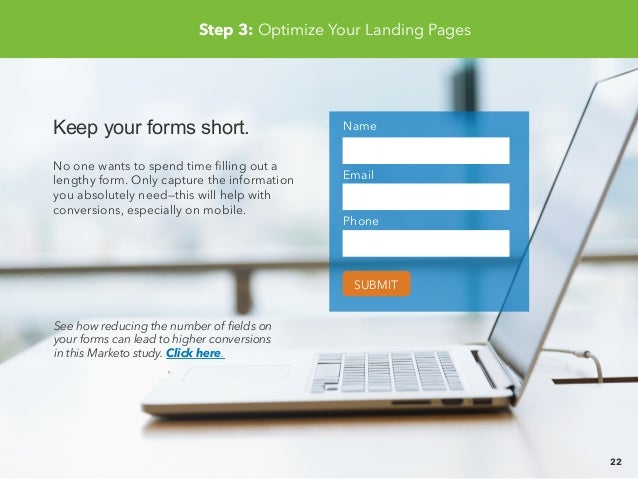Optimize Your Conversion Rate with User-Centered Design
What Is User-Centered Design?
User-Centered Design (UCD) is a design philosophy and discipline that is governed by principles that guide the composition, makeup, and layout of content that is found on the Internet. This philosophy focuses on the user, which includes their needs, desires, and even limitations.
By focusing on the ways that users behave when accessing and interacting with your website, developers can improve upon its structure, interface, and content to make it more attractive, organized, and productive for all users.
Your website’s interface should be straightforward, logical, and intuitive; all the while balancing these challenges with aesthetic matters as well. This requires strategic placement of basic elements of design, text, graphics, calls-to-action, plugins, and other assets. These strategies also address spacing and layout, visual cues, and other coding techniques that facilitate actions and behaviors that result in a sale.
The content on your website should resonate with your users and deliver marketing messages that address their needs and questions. Through research and content strategies, you can keep users engaged.
Here are a few ways to implement the user-centered design in your website:
1. Get Rid of Obstacles

The goal of user-centered design is to increase conversions, and that means eliminating user fatigue, doubt, and even a lack of feedback. Ultimately, this means reducing the amount of mental effort and energy the user must exert to be productive.
2. Eliminate Visual Clutter
If your website has graphical content that doesn’t help your users, it’s probably a good idea to remove them in the interest of productivity. Identify these areas that are distracting and unhelpful, and make sure that your content serves the sole purpose of making your users’ experience a valuable one. Determining which elements are distracting may be a challenging task, so proceed with some outside help, and an open mind.
3. Simplify And Minimize The Steps To Conversion
From the moment your users arrive at your website for the first time, they initiate a stepwise path to conversion. And at every step along this path, they have the power to cancel or abandon the process completely.
Of course, some of the areas where conversion is abandoned, canceled, or delayed are beyond your control, but this shouldn’t discourage you from taking action. Make the path toward conversion a short and easy one, with steps that require very little effort on the part of your users.
Keep in mind that reducing the overall demands of mental effort with regard to the entire process is better than increasing this effort with the hopes of reducing steps. “Easier” trumps “shorter” every time.
4. Make Your Content Clear And Conversational

Visitors don’t like to wait for a page to load, only to end up being greeted by a wall of text, especially if it comes across with even a hint of a pompous tone. This is discouraging, overwhelming, and frankly boring for them, and you’ll quickly lose customers by being so arrogant.
The problem with written content is that it is produced and received on a one-way street. To alleviate any strain on your readers, keep your tone light and conversational while writing with clarity. If it helps to convey your message in the form of an image, chart, or other graphical representation, use that instead.
5. Interact With Your Users Via Live Chat

Sometimes customers need direct interaction when it comes to assistance, and even though you may already be an expert on how to make a website tutorial, you need to take further action. Customers who can’t find answers to their questions tend to abandon their purchase and leave your website.
Live chat may be all you need to save your conversions from the scrap bin, and it is an opportunity to gain rapport with your customers. By being there when they need you most, you can garner positive reviews and gain valuable insight into what works on your website, as well as what doesn’t.
6. Make Your Forms Easy To Fill Out
Most of us have had to fill out a contact form at some point in our Internet lives, whether as customers, merchants, or any similar context. And the more of these forms we fill out, the more they feel like a chore. They can be intrusive and sometimes clumsy, but the contact form is a vital tool to e-commerce.
It’s to your advantage to keep user fatigue at a minimum, and you can accomplish this by reducing the number of fields that users have to fill in. To make this even easier, keep related information in sensible groups.
You can even minimize your customers’ errors on your end. Give feedback at the completion of every step, whether by highlighting correct inputs, or suggesting revisions when needed.
7. Don’t Neglect Mobile Users

Conversions on mobile devices tend to be lower than those completed on desktop and laptop computers, and this may be due to differences in usage patterns.
It’s also possible that many e-commerce sites simply don’t have a viable mobile version of their online stores.
Implement a mobile-friendly version of your website as soon as you can, keeping the user-centered design simplified, elegant, and with more space surrounding your call-to-action buttons and input fields.
8. Be Persuasive, Yet Subtle.

There are three ways to persuade without having to resort to the hard sell:
- Visual Design: By using professional-quality illustrations and photography, a clever color palate, and a user-friendly layout, your users will spend more time on your site, improving your conversion rates.
- Value Proposition: A value proposition is a clear, direct statement of what your product will specifically do to help your users. Users find these statements reassuring and useful.
- Call-To-Action Buttons: Be sure to have this button on your website. Make it clearly visible and clickable. It represents the culmination of the user’s experience and the moment when a website visit becomes a sale. Again, keep it simple.
Are your designs user-centered? Let us know by leaving a comment below.











